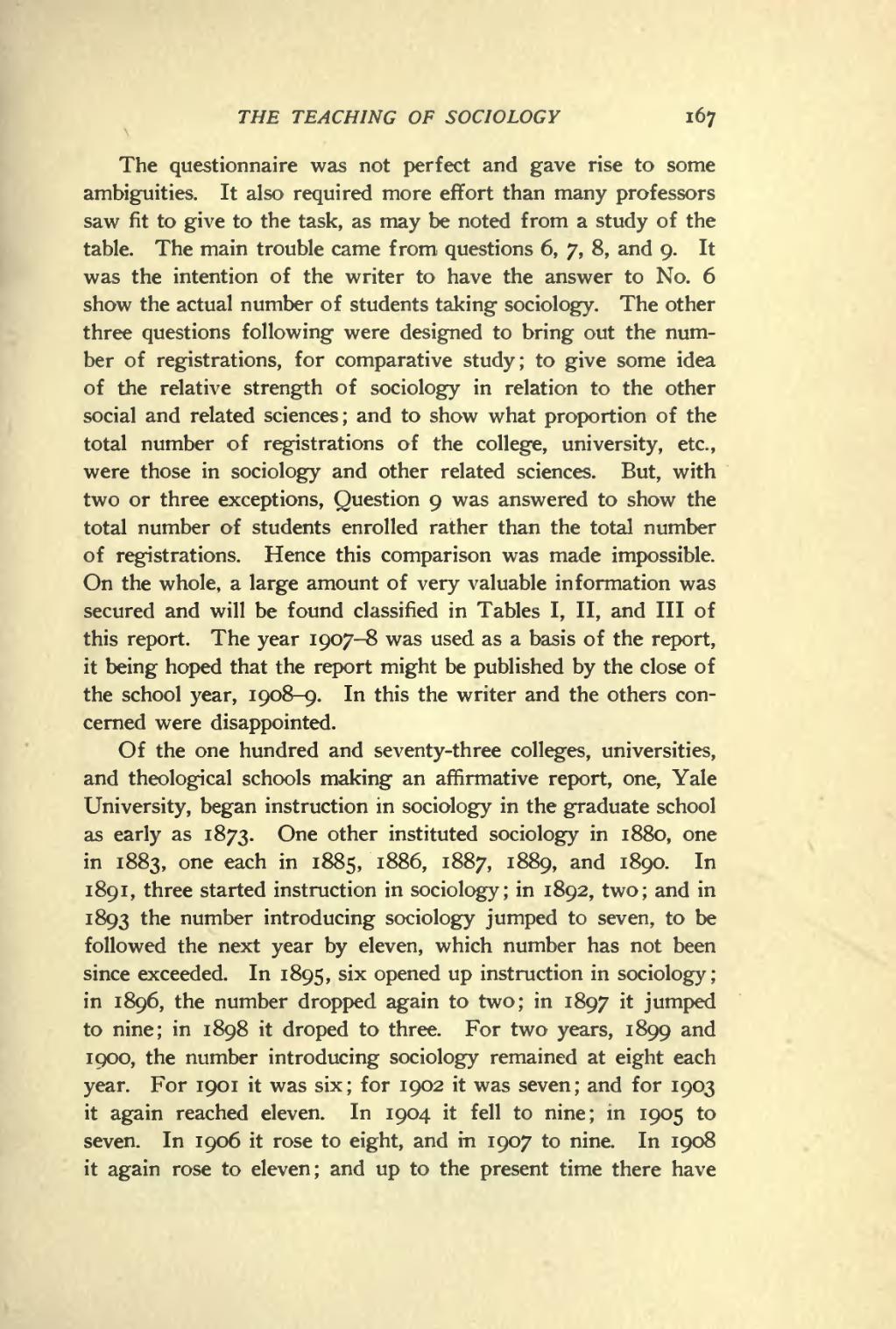THE TEACHING OF SOCIOLOGY 167
The questionnaire was not perfect and gave rise to some ambiguities. It also required more effort than many professors saw fit to give to the task, as may be noted from a study of the table. The main trouble came from questions 6, 7, 8, and 9. It was the intention of the writer to have the answer to No. 6 show the actual number of students taking sociology. The other three questions following were designed to bring out the num- ber of registrations, for comparative study; to give some idea of the relative strength of sociology in relation to the other social and related sciences; and to show what proportion of the total number of r^strations of the college, university, etc., were those in sociology and other related sciences. But, with two or three exceptions, Question 9 was answered to show the total number of students enrolled rather than the total number of registrations. Hence this comparison was made impossible. On the whole, a large amount of very valuable information was secured and will be found classified in Tables I, II, and III of this report. The year 1907-8 was used as a basis of the report, it being hoped that the report might be published by the close of the school year, 1908-9. In this the writer and the others con- cerned were disappointed.
Of the one hundred and seventy-three colleges, universities, and theological schools making an affirmative report, one, Yale University, began instruction in sociology in the graduate school as early as 1873. One other instituted sociology in 1880, one in 1883, one each in 1885, 1886, 1887, 1889, and 1890. In 1891, three started instruction in sociology; in 1892, two; and in 1893 the number introducing sociology jumped to seven, to be followed the next year by eleven, which number has not been since exceeded. In 1895, six opened up instruction in sociology; in 1896, the number dropped again to two; in 1897 it jumped to nine; in 1898 it droped to three. For two years, 1899 ^^^ 1900, the number introducing sociology remained at eight each year. For 1901 it was six; for 1902 it was seven; and for 1903 it again reached eleven. In 1904 it fell to nine; in 1905 to seven. In 1906 it rose to eight, and in 1907 to nine. In 1908 it again rose to eleven; and up to the present time there have

